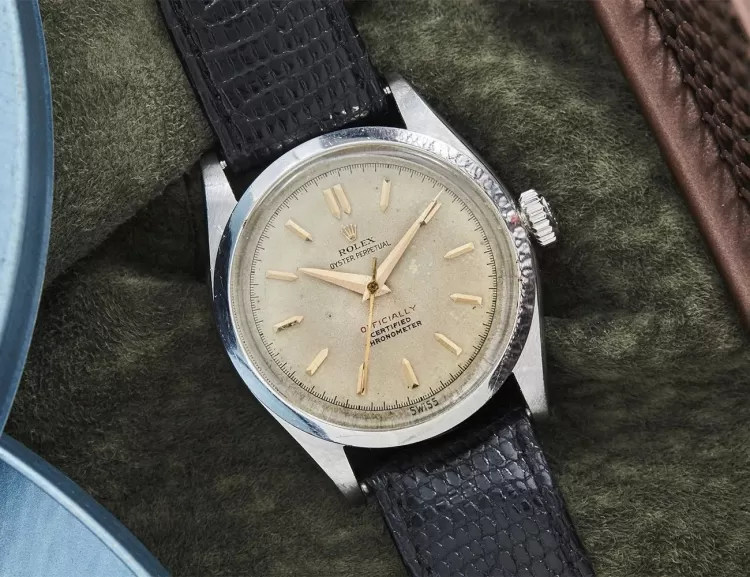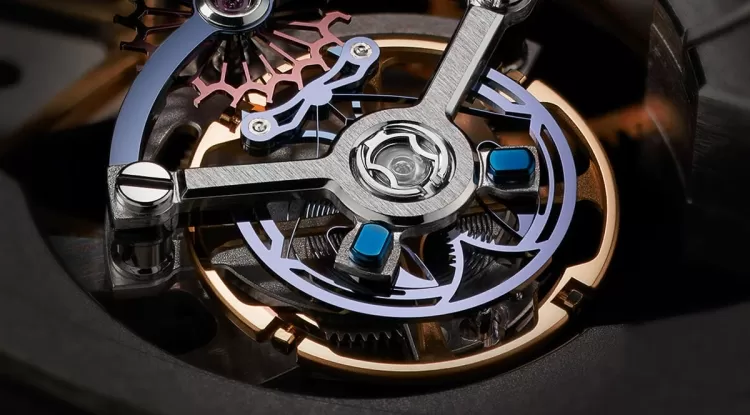The 10 Most Iconic Rolex Models of All Time
Discover the rich history and iconic innovations of Rolex, from the pioneering Oyster to the legendary Submariner. Dive into the story of Hans Wilsdorf and how Rolex evolved into one of the most significant watch brands worldwide, known for timeless design and enduring quality.

Industrial watchmaking may have taken root in America, but it was Switzerland that transformed it into a global powerhouse during the 20th century. The shift began in the 1940s when American watch factories focused on the war effort, leaving Switzerland to handle commercial and military contracts. Among the most successful companies to embrace and innovate within this space was Rolex, which not only rose to prominence in the world of horology but also grew to be one of the world’s most recognized luxury brands.
Founded by Hans Wilsdorf in the early 1920s, Rolex pioneered numerous mechanical innovations that redefined the capabilities and allure of wristwatches. Wilsdorf was a visionary not just in engineering but in marketing. Rolex watches adorned the wrists of adventurers scaling Mount Everest, swimming the English Channel, and even undertaking high-risk scientific experiments. By doing so, Rolex essentially invented the “advertorial,” turning each adventure into a showcase of its watches’ endurance.
This approach cemented Rolex’s status as a symbol of achievement, adventure, and resilience, creating associations with SCUBA diving, aviation, and even high society. By the late 20th century, wearing a Rolex had become an internationally understood display of both taste and accomplishment.
1. The Oyster (1926)

Rolex revolutionized the watch world with the release of the Oyster in 1926, the first truly waterproof wristwatch. Displayed at Selfridges in a fish tank, the Oyster impressed passersby by keeping perfect time underwater. With an innovative case design featuring a screw-down bezel, back, and crown, the Oyster established Rolex as the pioneer in creating water-resistant watches, setting the standard for future dive watches. This design philosophy remains crucial to modern dive watches, with the term “Oyster” still synonymous with water resistance in Rolex’s collection.
2. The Datejust (1945)

Rolex’s Datejust, launched in 1945, brought a major innovation with its ability to instantly change the date display at midnight. Recognized by its fluted bezel and magnifying “cyclops” over the date window, the Datejust became a timeless classic, blending sophistication with daily utility. With its versatility and elegance, the Datejust became a model suited for any occasion, solidifying its status as one of the most iconic watches in Rolex’s lineup.
3. The Oyster Perpetual (1950)

With the Oyster Perpetual, Rolex combined water resistance and automatic winding in one design. Known as the “bubbleback” for its slightly thicker case back, the watch showcased Rolex’s innovative perpetual rotor, which allowed the watch to wind automatically with the motion of the wrist. The Perpetual rotor was a hallmark of efficiency, and the model evolved to include notable variants such as the “Air-King” and “Explorer,” catering to enthusiasts of aviation and mountaineering. Today, the Oyster Perpetual remains an essential model in Rolex’s catalog.
4. The Submariner (1953)

The Submariner, released in 1953, marked a significant leap forward for dive watches. Building on the waterproof features of the Oyster, the Submariner added a rotating bezel for timing dives and an enhanced gasket system. Quickly recognized as the definitive dive watch, it has remained in production ever since, known for its rugged durability and timeless aesthetic. Over the years, the Submariner has become more than just a tool watch; it’s a cultural icon beloved by watch enthusiasts and casual wearers alike.
5. The GMT-Master (1954)

Created in collaboration with Pan-Am Airlines, the GMT-Master introduced a 24-hour hand and bezel for tracking multiple time zones, catering to the needs of international pilots. This model established a legacy in aviation and world travel, appealing to both pilots and global travelers. The GMT-Master II, introduced later, refined the design with a rotating ceramic bezel and a more advanced movement, keeping this model as a favorite for those who appreciate travel and functionality.
6. The Milgauss (1956)

In 1956, Rolex introduced the Milgauss, specifically designed for scientists working in magnetic environments like CERN laboratories. Engineered to resist magnetic interference up to 1,000 gauss, the Milgauss included a unique Faraday cage within the case. Known for its distinctive lightning bolt seconds hand, the Milgauss was both a technical marvel and an aesthetic statement. Although less celebrated, the Milgauss stands as a testament to Rolex’s commitment to specialized tools for professionals.
7. The Daytona (1963)

Named after the famous Daytona International Speedway, the Rolex Daytona became an icon among chronographs. Originally developed for racing enthusiasts, the Daytona featured a tachymeter bezel and a robust chronograph function, making it ideal for timing laps. Paul Newman’s famous association with the model further cemented its popularity, and today, vintage Daytona models are highly sought-after collectibles, with some achieving record-breaking prices at auction.
8. The Day-Date (1965)

Launched in 1965, the Day-Date was the first watch to display the full day of the week along with the date. Known as “The President” due to its popularity among U.S. presidents, the Day-Date is celebrated for its iconic design and luxurious appeal, often seen in gold or platinum. The President bracelet, with its distinctive crown-shaped links, is an integral part of the watch’s prestigious image, making the Day-Date synonymous with power and sophistication.
9. The Sea-Dweller (1967)

Building on the foundation of the Submariner, the Sea-Dweller was designed for deep-sea divers and commercial diving expeditions, capable of withstanding extreme underwater pressures. Introduced in 1967, it featured a helium escape valve, allowing it to survive decompression phases in diving chambers. The Sea-Dweller’s robust design and unmatched water resistance made it indispensable for professional divers and remains a revered model for those who demand exceptional durability.
10. The Sky-Dweller (2012)

One of Rolex’s more recent innovations, the Sky-Dweller introduced an annual calendar and dual time-zone functionality in a sophisticated design. With a rotating bezel that selects functions for easy setting, this model represents one of the brand’s most complex calibers to date. Though initially divisive due to its bold aesthetic, the Sky-Dweller has gained appreciation for its utility and technical sophistication, solidifying Rolex’s reputation for combining innovation with style.
What's Your Reaction?




















